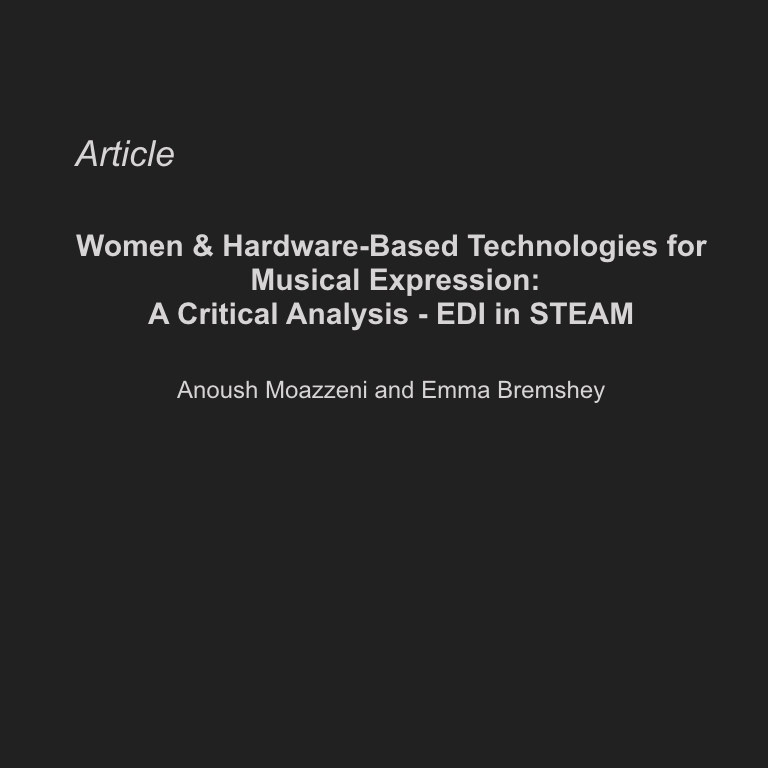

Publication Announcement
In this project, we aimed to examine the state of diversity and inclusion in STEAM within a case study and to address the huge numerical gap in the number of women of colour in the field of hardware-based designs for musical expression in live performances. We are interested in exploring and understanding the mechanisms and narratives of assimilation through which bodies and matter inhabit socially constructed identities within the fields of STEM, music technology and interface design. This research project is an aim to visualize how gender, race and ethnicity are inscribed into STEM(+Art) and how acquirement of knowledge through scientific means has been influenced by notions of gender/race and gender roles in society. Moreover, we discussed the inclusion of Arts and Design in STEM fields by using the STEAM denomination due to the interrelatedness of fields in our particular case study. Thus we suggested changes on multiple levels; First, we analyzed different educational models in order to suggest an ideal model that favours the promotion of diversity, while also looking at potential. We suggested that the education system should use the 4-A scheme: Availability, Accessibility, Acceptability and Adaptability to ensure diversity in the system that forms future workers in fields that have significant underrepresentation. Second, we believe in the importance and the power of representation. Therefore, while implementing a balancing recruitment process for STEAM fields in the education system, as well as the workplace following graduation, we believe that representation will come into play in an equally important way. Finally, we would encourage intersectionality in both the recruitment and the representation politics of STEAM. By shining an even light on an equal number of women who identify as a mix of different intersectional identity factors, we would offer an achievable portrait of what the STEAM field landscape should look like in terms of diversity.
